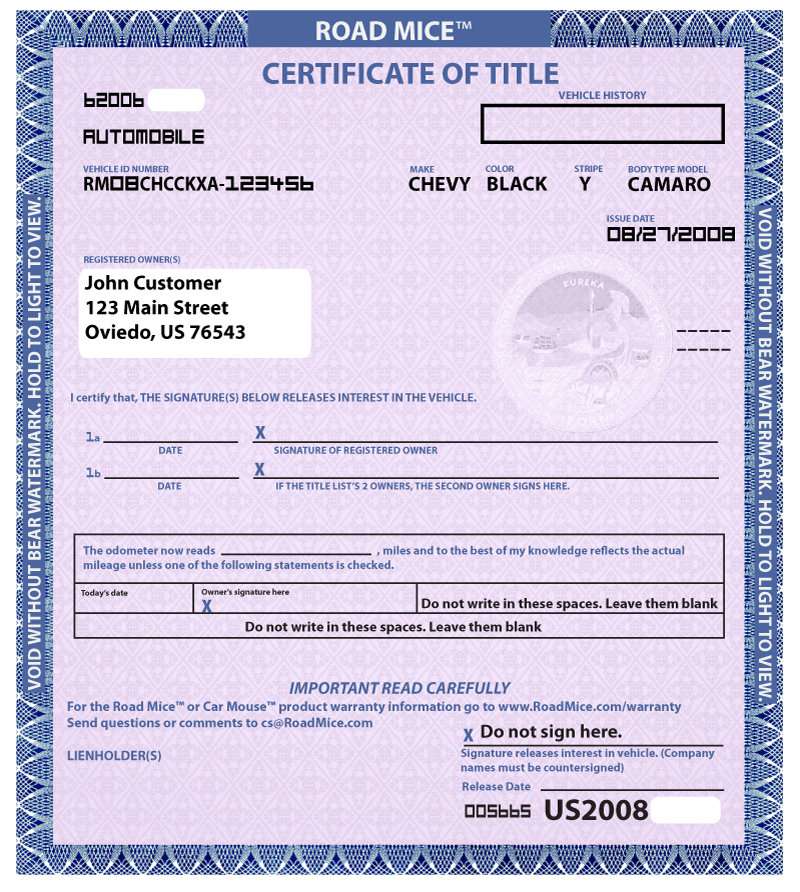E-Title Registration: A Comprehensive Guide to the Future of Property Ownership

The world is rapidly digitizing, and traditional methods of property ownership are no exception. Enter e-Title Registration, a modern and efficient system revolutionizing how we record, transfer, and manage property rights. This comprehensive guide dives deep into the world of e-Title registration, exploring its benefits, processes, legal considerations, and potential challenges, providing you with a thorough understanding of this transformative technology.
What is e-Title Registration?
At its core, e-Title registration, also known as electronic land registration or digital land registration, is the process of converting physical paper-based property titles and related documents into a secure, digital format that can be managed and accessed electronically. Instead of relying on physical deeds and bulky files stored in government offices, all relevant information about a property, including its ownership history, legal descriptions, encumbrances, and transactions, is stored and managed in a centralized electronic database.
This digital system offers numerous advantages over the traditional paper-based system, including increased efficiency, transparency, and security. It streamlines the process of property transactions, reduces the risk of fraud, and provides easier access to information for all stakeholders.
Why is e-Title Registration Important?
The shift from paper-based to electronic land registration is driven by a growing need for a more efficient, secure, and transparent system to manage property rights. Here are some compelling reasons why e-Title registration is so important:
- Reduced Fraud and Forgery: Traditional paper-based systems are vulnerable to fraud, including the forgery of documents and the unauthorized alteration of records. e-Title registration, with its built-in security measures, significantly reduces the risk of such fraudulent activities. The digital nature of the records makes them more tamper-proof and easier to verify.
- Increased Efficiency and Speed: Paper-based systems often involve lengthy and cumbersome processes for searching records, transferring titles, and registering mortgages. e-Title registration automates these processes, dramatically reducing the time and effort required for property transactions. This leads to faster closings and more efficient property markets.
- Improved Transparency and Accessibility: e-Title registration provides greater transparency by making property records easily accessible to authorized users, such as property owners, lawyers, and government agencies. This improved access to information can help to prevent disputes and promote informed decision-making.
- Lower Administrative Costs: Managing and maintaining physical paper records can be expensive. e-Title registration eliminates the need for physical storage, reduces the costs associated with archiving and retrieval, and streamlines administrative processes, leading to significant cost savings for government agencies and property owners.
- Enhanced Accuracy and Reliability: Paper-based records are prone to errors and omissions. e-Title registration systems employ sophisticated data validation and quality control measures to ensure the accuracy and reliability of property records. This reduces the risk of disputes arising from inaccurate or incomplete information.
- Facilitates Land Development and Investment: A reliable and efficient land registration system is crucial for promoting land development and investment. e-Title registration provides investors with greater confidence in the security of their property rights, encouraging them to invest in land and property development projects.
- Improved Land Administration and Governance: e-Title registration provides governments with better tools to manage land resources and implement land policies effectively. Providing accurate and up-to-date information about land ownership and use enables governments to make informed decisions about land allocation, infrastructure planning, and environmental protection.
Key Components of an e-Title Registration System:
A robust e-Title registration system typically comprises several key components working together to ensure efficient and secure management of property data:
- Digital Land Registry Database: This is the heart of the system, a centralized electronic database where all property titles, legal descriptions, ownership histories, and related documents are stored. The database must be designed to handle large volumes of data and ensure data integrity, security, and accessibility.
- Secure Authentication and Access Control: The system must have robust authentication and access control mechanisms to ensure that only authorized users can access and modify property records. This may involve the use of passwords, biometrics, digital certificates, and other security measures.
- Workflow Management System: This component automates the processes involved in property transactions, such as title transfers, mortgage registrations, and lien filings. The workflow system manages the flow of documents and information between different parties, ensuring that all necessary steps are completed in a timely and efficient manner.
- Document Management System: This component manages the storage, retrieval, and version control of digital documents related to property titles. It ensures that all documents are properly indexed and organized, making them easy to find and access.
- GIS (Geographic Information System) Integration: Integrating e-Title registration with a GIS allows for the visualization of property data on maps and the spatial analysis of land use patterns. This can be valuable for land planning, infrastructure development, and environmental management.
- Online Portal for Users: An online portal provides users with access to property records and allows them to initiate property transactions online. The portal should be user-friendly and provide clear instructions on how to use the system.
- Data Security and Backup: The system must have robust data security measures in place to protect against unauthorized access, data breaches, and other security threats. This includes firewalls, intrusion detection systems, and regular security audits. In addition, regular data backups are essential to ensure that data can be recovered in the event of a system failure or disaster.
The e-Title Registration Process: A Step-by-Step Guide
The specific steps involved in e-Title registration may vary depending on the jurisdiction, but the general process typically involves the following stages:
- Preparation and Digitization of Existing Records: The first step is to prepare existing paper-based property records for digitization. This may involve scanning, cleaning, and indexing the documents. In some cases, the records may need to be re-typed or converted to a digital format.
- Data Entry and Verification: Once the records are digitized, the data is entered into the e-Title registration database. This includes information about the property’s legal description, ownership history, encumbrances, and other relevant details. The data must be carefully verified to ensure accuracy and completeness.
- Title Examination and Verification: A title examiner reviews the digital records to verify the validity of the title and identify any potential problems or defects. This may involve searching public records, reviewing legal documents, and contacting other parties to obtain additional information.
- Registration of the Title: If the title examination is satisfactory, the title is registered in the e-Title registration system. This involves assigning a unique identification number to the property and recording the ownership information in the database.
- Issuance of an Electronic Title Certificate: Once the title is registered, an electronic title certificate is issued to the property owner. This certificate serves as proof of ownership and can be used to facilitate future property transactions.
- Updating and Maintaining the Records: The e-Title registration system must be kept up-to-date to reflect any changes in ownership, encumbrances, or other relevant information. This involves regularly updating the records and ensuring that all transactions are properly recorded.
Benefits for Different Stakeholders:
e-Title registration offers significant benefits for various stakeholders in the property market:
- Property Owners:
- Increased Security: Reduced risk of fraud and forgery.
- Faster Transactions: Streamlined processes for buying, selling, and mortgaging property.
- Easier Access to Information: Convenient access to property records online.
- Reduced Costs: Lower fees for registration and transaction services.
- Greater Peace of Mind: Increased confidence in the security of their property rights.
- Lawyers and Real Estate Professionals:
- Increased Efficiency: Faster and easier access to property records.
- Reduced Costs: Lower costs for title searches and legal services.
- Improved Accuracy: More reliable and up-to-date information.
- Streamlined Workflow: Automated processes for property transactions.
- Enhanced Client Service: Faster and more efficient service for clients.
- Government Agencies:
- Improved Land Administration: More efficient management of land resources.
- Increased Revenue: Higher revenues from registration fees and property taxes.
- Reduced Costs: Lower administrative costs for managing property records.
- Improved Transparency: Greater transparency in land ownership and transactions.
- Enhanced Governance: Better decision-making based on accurate and up-to-date information.
- Financial Institutions:
- Reduced Risk: Lower risk of mortgage fraud and loan defaults.
- Faster Loan Processing: Streamlined processes for mortgage registration.
- Improved Security: Enhanced security of mortgage collateral.
- Lower Costs: Reduced costs for loan origination and servicing.
- Increased Efficiency: More efficient management of mortgage portfolios.
Legal and Regulatory Considerations:
The implementation of e-Title registration involves significant legal and regulatory considerations. Legislatures and regulatory bodies must establish clear legal frameworks to:
- Define the Legal Status of Electronic Titles: Laws must clearly define the legal status of electronic title certificates and ensure that they are recognized as valid proof of ownership.
- Establish Standards for Data Security and Privacy: Regulations must establish standards for data security and privacy to protect sensitive property information from unauthorized access and misuse.
- Define Liability for Errors and Omissions: Laws must define liability for errors and omissions in the e-Title registration system and establish mechanisms for resolving disputes.
- Address the Issue of Digital Signatures and Authentication: The legal framework must address the issue of digital signatures and authentication to ensure that electronic documents are legally binding and enforceable.
- Establish Procedures for Converting Existing Paper-Based Records: Regulations must establish procedures for converting existing paper-based property records to electronic format and ensure that the conversion process is accurate and reliable.
- Ensure Interoperability with Other Government Systems: The e-Title registration system should be interoperable with other government systems, such as tax assessment systems and land planning systems, to ensure seamless data exchange and coordination.
Challenges and Potential Pitfalls:
Despite its numerous benefits, the implementation of e-Title registration can present several challenges:
- High Implementation Costs: Implementing an e-Title registration system can be expensive, requiring significant investments in hardware, software, training, and data conversion.
- Resistance to Change: There may be resistance to change from stakeholders who are accustomed to the traditional paper-based system.
- Data Security Risks: The electronic nature of the system makes it vulnerable to data security risks, such as hacking, data breaches, and cyberattacks.
- Technical Complexity: The system can be technically complex to implement and maintain, requiring specialized expertise.
- Data Quality Issues: Existing paper-based records may contain errors, omissions, or inconsistencies that need to be addressed during the digitization process.
- Digital Divide: The digital divide may limit access to the system for some users, particularly in developing countries.
- Lack of Interoperability: Lack of interoperability with other government systems can hinder data exchange and coordination.
Overcoming the Challenges and Ensuring Success:
To overcome these challenges and ensure the successful implementation of e-Title registration, it is important to:
- Develop a Clear Implementation Plan: A detailed implementation plan should be developed, outlining the scope of the project, the resources required, the timelines, and the key milestones.
- Secure Adequate Funding: Adequate funding should be secured to cover the costs of hardware, software, training, data conversion, and ongoing maintenance.
- Engage Stakeholders: Stakeholders should be engaged early in the process to address their concerns and build support for the project.
- Provide Training and Support: Training and support should be provided to users to help them understand how to use the system and access the information they need.
- Implement Robust Data Security Measures: Robust data security measures should be implemented to protect sensitive property information from unauthorized access and misuse.
- Ensure Data Quality: Data quality assurance procedures should be implemented to ensure the accuracy and completeness of the data.
- Develop Interoperability Standards: Interoperability standards should be developed to ensure that the system can exchange data with other government systems.
- Address the Digital Divide: Measures should be taken to address the digital divide and ensure that all users have access to the system.
The Future of e-Title Registration:
e-Title registration is not a static technology; it is constantly evolving to meet the changing needs of the property market. Future trends in e-Title registration include:
- Blockchain Technology: Blockchain technology is being explored as a way to enhance the security and transparency of e-Title registration systems. Blockchain can provide a tamper-proof record of property transactions and eliminate the need for a central authority.
- Artificial Intelligence (AI): AI is being used to automate tasks such as title examination, fraud detection, and data validation. AI can improve the efficiency and accuracy of e-Title registration systems.
- Smart Contracts: Smart contracts are being used to automate the execution of property transactions. Smart contracts can automatically transfer ownership, release funds, and perform other tasks based on pre-defined conditions.
- Integration with IoT (Internet of Things): e-Title registration is being integrated with IoT devices, such as sensors and cameras, to provide real-time information about property conditions and transactions.
- Increased Use of Mobile Technology: Mobile technology is being used to provide users with access to property records and allow them to initiate property transactions on their smartphones and tablets.
Conclusion:
e-Title registration represents a significant advancement in the way property rights are managed and recorded. By embracing this technology, governments, property owners, and other stakeholders can benefit from increased efficiency, security, transparency, and cost savings. While challenges exist, careful planning, stakeholder engagement, and a commitment to data quality and security can ensure the successful implementation of e-Title registration and unlock its full potential. As the world becomes increasingly digital, e-Title registration will play an increasingly important role in shaping the future of property ownership. It’s more than just digitizing records; it’s about creating a more efficient, secure, and accessible property ecosystem for everyone.















